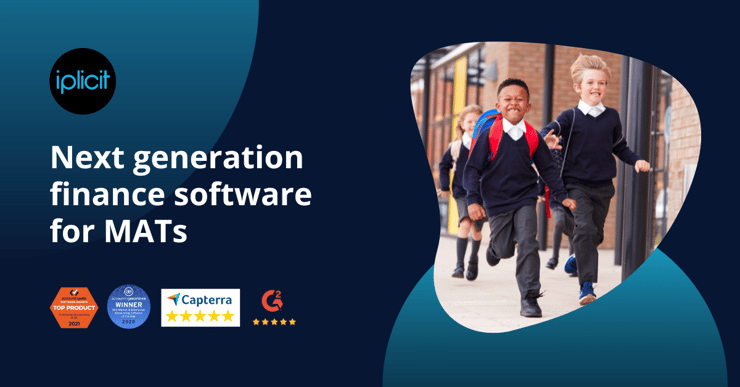Budgeting and reporting for a multi-academy trust can be an onerous task.
Before one year’s accounts are settled and filed, planning for the next has to be well under way – and budgeting is never easy.
Budgets are always tight and finance teams are expected to ensure taxpayer money delivers the best possible educational outcomes. The trust’s chief executive is accountable to Parliament to make sure that happens.
One of the biggest obstacles to effective budgeting and reporting is the sheer volume of work a MAT finance team handles – and the time-consuming manual processes that can get in the way of producing meaningful management information.

The key deadlines for MAT reporting and budgeting
Schools are never far from a major deadline in the budgeting and reporting process.
Some of the key ones for the coming year are as follows.
March 15: All academy trusts which have an open academy need to submit their School Resource Management Self-Assessment, in response to a government checklist. The aim of the exercise is to show they have acceptable arrangements for financial management and governance – and that they have the processes and systems to achieve good financial health and resource management.
May 31: Accounts for 2022-23 must be filed with Companies House.
August 31 (TBC): At around this date, the Academies Budget Forecast Return is due, collecting key data about revenue, income and costs covering past, current and future financial years, for analysis by the Education and Skills Funding Agency and the Department for Education. MATs must submit a consolidated return, aggregating the budgets of all their academies.
August 31 is also the end of the current accounting period for most MATs.
December 31: MATs must submit their audited accounts for 2023-24 to the DfE.
January 31, 2025: The accounts for 2023-24 must be published on the MAT’s own website, ahead of the May 31 filing deadline at Companies House.
Why reporting for a MAT can be so hard
High standards are expected of MAT finance leaders. There’s an obligation to produce accounts that comply with:
- The Companies Act 2006
- Standards laid down by the Financial Reporting Council
- The Statement of Recommended Practice (SORP) for charities
- The government’s Academies Accounts Direction.
- Auditing by an independent registered auditor, with an independent review of regularity.
That’s a pretty demanding list of standards to adhere to and different audiences to consider – on top of producing reports for trust leaders and the scrutiny of the MAT’s own board.
It makes for particularly hard work if you don’t have access to all the financial data in one place – the “single source of truth” that makes it possible to run a finance team efficiently.
In many trusts, different academies have different software systems, or separate instances of the same software. What’s more, if retrieving data from the finance system is difficult, it’s tempting for some staff to store their own data in spreadsheets outside the finance system.
The more you run the risk of information residing in silos, the harder it will be to produce consolidated reports without a laborious process of reconciling conflicting data.
The same applies if your finance software system is not agile enough for you to present accurate data to the leadership team in a timely fashion. If the data needs to be pulled out of the finance system and subjected to a lot of tweaking in Excel, the system is holding you back.
The challenges to budgeting this year
Setting budgets for schools has never been easy – but this year it has been a particular challenge for a host of reasons.
To begin with, there was a £370m error by the DfE when it announced school spending allocations. The mistake meant pupil funding was rising by 1.9%, not the expected 2.7%, and schools were forced to re-draw their budgets.
This episode happened amid what was already a difficult budget setting period. A dispute over teachers’ pay was eventually resolved by a 6.5% rise, of which schools will have to contribute 3.5%.
With budgets squeezed, the Institute of Fiscal Studies says the purchasing power of schools will be 3% lower in 2024-25 than it was in 2009-10, while some local authorities fear they could effectively be bankrupted by the cost of SEND provision.
Amid all these challenges, schools are under even more pressure than usual to budget accurately and keep tight control of costs.
The government encourages MATs to compare themselves with other trusts through its financial benchmarking service and to monitor 10 key areas:
- Staff pay as a percentage of total expenditure
- Average teacher cost
- Pupil-to-teacher ratio
- Class sizes
- Teacher contact ratio
- Proportion of budget spent on the leadership team
- Three to five year budget projections
- Spend per pupil for non-pay expenditure lines compared with similar schools
- School improvement plan priorities and the relative cost of options
- A list of contracts with costs and renewal dates.
Keeping on top of these costs requires access to accurate data. When information is held up by the need to input figures, reconcile conflicting information or wait for a lengthy month-end process, it is much easier for budgets to slip out of control despite everyone’s best efforts.
How software can help improve budgeting and reporting
Software will normally be one of the items on that list of contracts that the government says must be reviewed regularly. Schools should ensure all contracts are re-tendered or reviewed for value for money before they are renewed.
Clunky software can badly hamper the work of a finance team in attempting to produce comprehensive and accurate reports and budgets.
Research conducted for iplicit in 2023 produced the alarming revelation that 47% of CFOs in MATs would say their finance software was “inadequate” or “requires improvement”.
The DfE last year published a 90-page document setting out the knowledge, skills and behaviours it expects of Chief Executive Officers in larger MATs. On the subject of IT, it says CEOs should understand that it “is an essential organisation service that needs proactive investment and maintenance”.
Trusts should have an IT plan and resources to keep updating their networks and devices, the government says. One of the ways they should do this is by “understanding the advantages of cloud-based systems, data centres and services to manage risk and maximise efficiencies”.
The DfE also says schools should have a “robust purchase order system” with “adherence to internal delegation limits and authorisation controls” – something that is much easier to do with up-to-date cloud software rather than the legacy systems that some MATs have to contend with.
MATs which don’t use the latest cloud software could be undermining their own efforts at budgeting and reporting in two key ways.
Firstly, they will be spending unnecessarily on inefficient systems which cannot keep up with their current needs.
And just as importantly, those systems will be making it harder to get the accurate, timely data that shows how effectively the trust is being run – and where performance can be improved.
Find out more
Find out how iplicit can help multi-academy trusts, get in touch for a demonstration.

